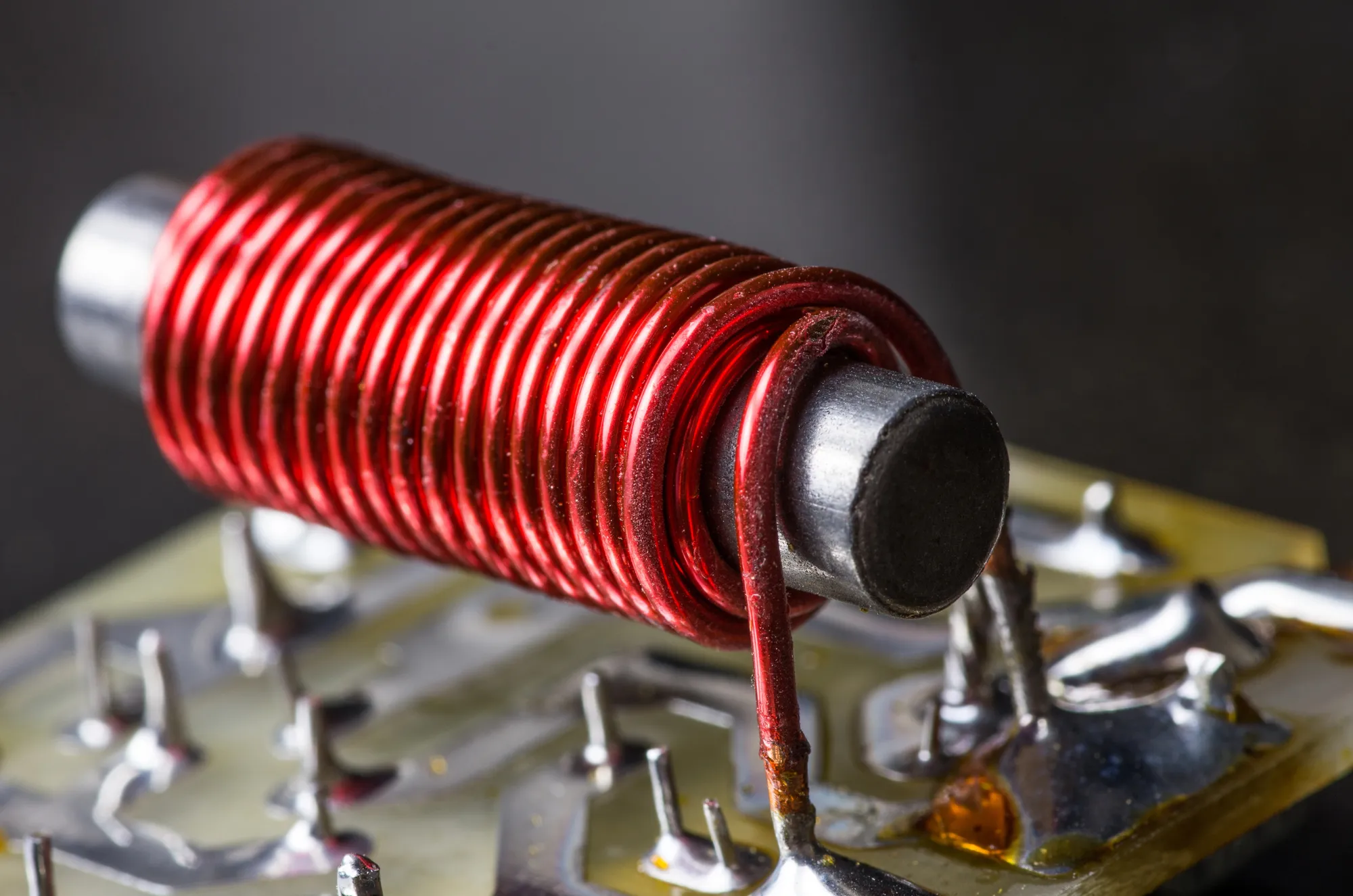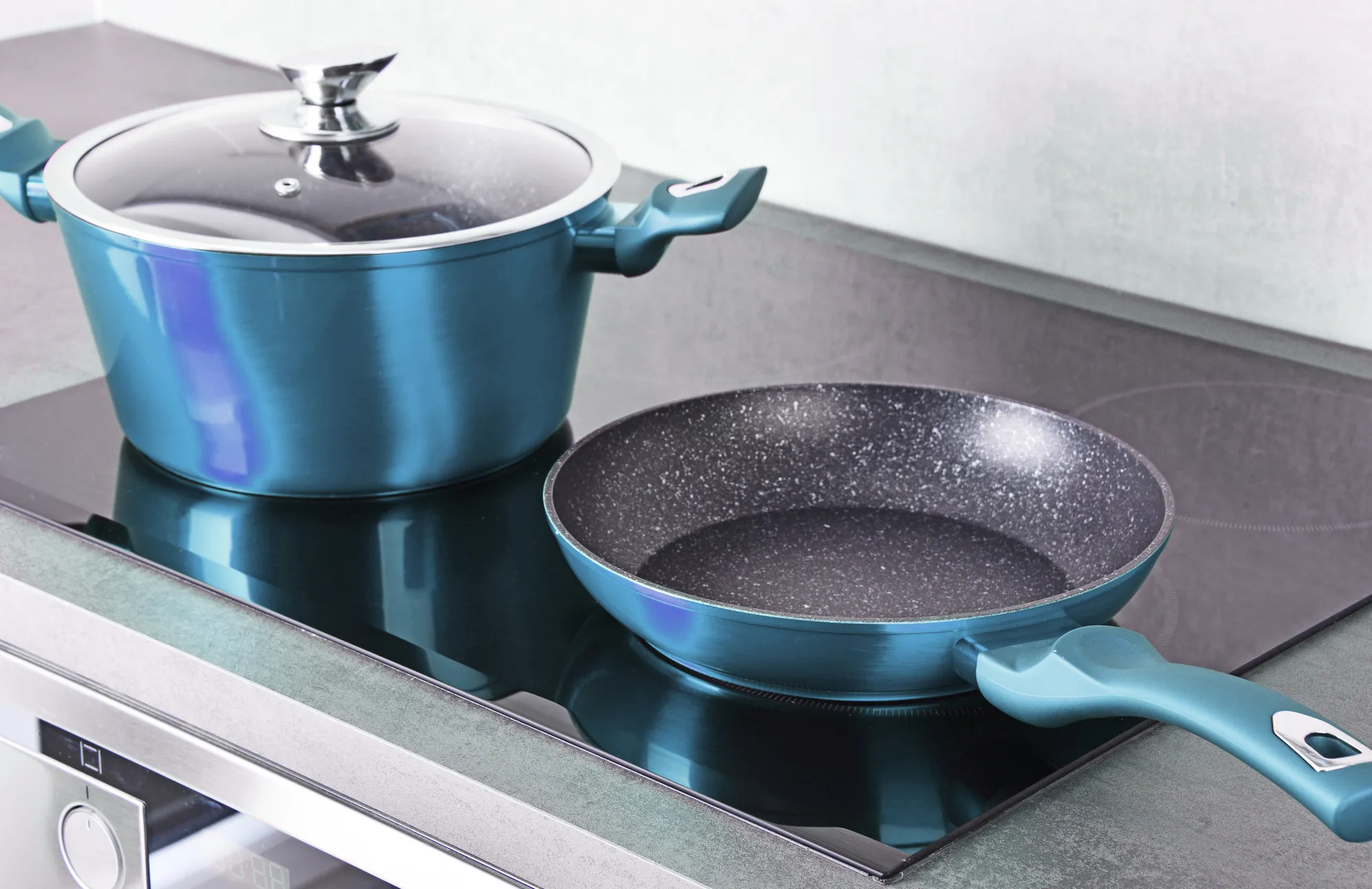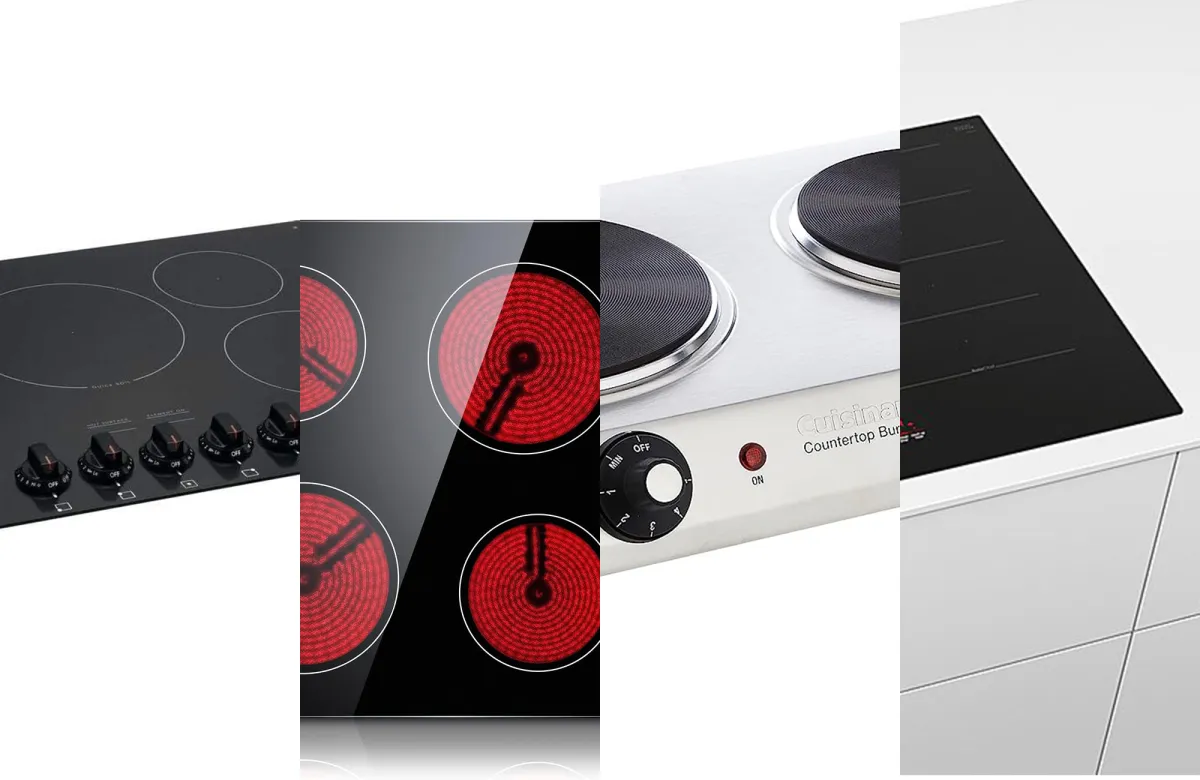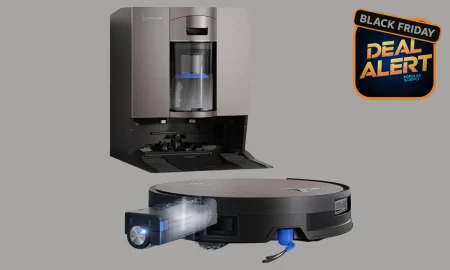Ask someone in the United States about “electric cooking” and they’ll probably describe one of those awful coil stoves, the ones that take forever to heat up and then burn your dinner to a crisp the moment you take your eyes off it.
This unfortunate association is perhaps one reason why induction cooking hasn’t quite taken off in the U.S. the way it has elsewhere in the world—in Europe, for example, where induction stoves are commonplace. But what is induction cooking, anyway? How do induction stoves differ from electric stoves? And are they actually better? Read on for all the answers.
What’s the difference between an induction stove and an electric stove?
At its most basic level, cooking involves heating your food with a heat source. For most of our history, stoves have worked with this same basic principle: They provide a heat source that transfers heat to your food.
Induction stoves, however, are fundamentally different. Rachelle Boucher, a chef and induction advocate, explains to Popular Science. “The science of induction cooking boils down to direct versus indirect heat.”
A conventional stove provides indirect heating: the heat comes from an external source, be it a flame or a heated element (like that annoying electric coil in an electric stove), which then heats the pot. Induction, by contrast, provides direct heat: There is no external heat source. The pot itself is the source of the heat.
How do induction stoves work?
How can this be? The answer is surprisingly simple, and is based on a clever use of electromagnetism.
Induction: the interaction of electricity and magnetism
In the early 19th century, scientists realized that electricity and magnetism were in fact two parts of the same force, which we now call electromagnetism. In 1831, pioneering British physicist and chemist Michael Faraday demonstrated the connection between the two phenomena with an experiment in which an electric current created an accompanying magnetic field.
Faraday began experimenting with how to further control the relationship between an electric current and magnetic field. He soon found that winding a wire into a coil could create an electromagnet: a device that uses electricity to create a strong magnetic field. More than a century later, Faraday’s electromagnet coil is basically what sits beneath the glass surface of an induction stove.
How induction works both ways
Induction doesn’t just involve an electric current creating a magnetic field; it can also involve a magnetic field creating an electric current. In other words, the effect works both ways, with the presence of one component of electromagnetism inducing the presence of the other. This can also create a cascading process, where an electric current induces a magnetic field, which induces another current, and so on.
In the 200 years since Faraday’s discovery, induction has been used for a range of purposes, from motors to medical treatments. The first patents for an induction stove were filed in the early part of the 20th century, and the idea behind them was essentially the same as today’s designs. It works like this: you start with an electric current from a wall outlet. The stove runs this current through a specially designed electromagnet, creating a rapidly oscillating magnetic field.

This magnetic field creates another current—this time in the metal that makes up your cookware. (There’s a caveat here, which is that induction cookware has to be made from certain metals, but we’ll get to that in a minute.)
But while an electrified pot is all very well, it’s still not getting us any closer to cooking dinner. What we want is a heated pot. It’s here we come to the final, key part of the equation: resistance.
A brief detour into the nature of electric current
To explain how the electric current in your pot is converted into heat, we need to look at what an electric current actually is. For electricity to flow, something has to carry it. When an electric current flows through a wire, for example, what’s actually happening is that a bunch of electrons are travelling along that wire.
But this process isn’t seamless—electrons can interact with atoms in the wire. When an electron collides with an atom, part of their energy is transferred to the atom, causing it to vibrate and shake. This vibration is, quite literally, heat. This phenomenon, where an electric current heats a material, is called Joule heating.
Some materials make it easier for current to pass through than others. We say that the more trouble electrons have making it through a material, the higher its resistance—and the more current is lost as heat.
Induction cookware is made from a class of metals known as ferromagnetic metals. These metals have several properties that make them sensitive to the effects of magnets, and are perhaps best known for their ability to be made into permanent magnets themselves. Iron is the most prominent such metal; others include nickel and cobalt.

These metals are perfect for induction cookware because they allow magnetic fields to pass easily and have a high resistance. In addition, when they are placed in a rapidly oscillating magnetic field, the current that is created forms closed loops. These are called “eddy currents,” and they generate a great deal of heat.
So, to summarize, the basic concept behind induction cooking is based on three steps:
- An electric current flows through a coil of wire located under the cooktop, creating a magnetic field.
- That magnetic field interacts with the metal of the pot, creating an electric current in the pot.
- The resistance of the pot means that the electric current is converted into heat, causing the pot to heat up.
The benefits of induction cooking
So that’s how induction works. But is it actually any better than using a conventional electric stove? Or just using gas?
There are several ways to interpret the word “better” here. Anyone who’s used an induction stove will probably agree that doing so is absolutely a more pleasant and straightforward experience than using a conventional electric range. There’s no waiting for the coil to heat up, or having to run two burners simultaneously to be able to move a pot from one heat to another. If anything, it can be startling just how quickly induction stoves heat up, and how responsive they are to changes in temperature setting.
Induction stoves are more efficient
But while induction cooking is certainly a much more pleasant experience than using a conventional electric stove, Boucher says the technology’s primary benefit is efficiency—which brings us back to the difference between direct and indirect heating. By its nature, indirect heating is fundamentally inefficient, because relatively little heat gets transferred to your food from the heat source. The rest of it ends up heating the room, the stove itself—and you.
The direct nature of induction cooking, by contrast, means that far more energy is transferred to the food. How much more? Boucher says, “Induction cooktops operate at up to 90 percent efficiency compared to 74 percent for traditional electric stoves and only 40 percent for gas stoves.” In other words, whereas induction stoves transfer 90 percent of their energy into usable heat, traditional electric stoves transfer 74 percent and gas stoves only 40 percent.
Related Ask Us Anything Stories
How are these figures calculated? Boucher explains, “When we compare induction and gas, we measure efficiency in terms of how much of the energy used by the cooktop—either from electricity or natural gas—ends up as direct, usable heat in the cookware.”
Increased efficiency also means lower costs. The benefits of replacing a traditional electric stove with an induction range will appear directly on your electricity bill: since induction and electric stoves both plug into wall outlets, induction’s greater efficiency will mean lower running costs.
The relative costs of induction and gas stoves vary from place to place, depending on local gas and electricity prices. However, the large difference in efficiency means that it’s most likely that an induction stove will end up being cheaper to operate.
There are also other benefits to induction cooking that should be factored into this equation. For example, as Boucher points out, “cooler kitchens can mean less reliance on fans or air conditioning.”
Health and environmental benefits of induction stoves
Induction stoves are also better for your health than gas stoves, which release all sorts of harmful pollutants into your kitchen. Boucher cites nitrogen dioxide, carbon monoxide, and benzene as examples.
One common question about induction stoves—and electricity more broadly—is to what extent the environmental benefits are dependent on the way grid electricity is produced. If the energy that powers an induction stove comes from a gas-fired power plant, does that stove really offer any environmental benefits over a gas stove?
Boucher says the answer is yes: “Fossil fuels used to generate electricity for an induction cooktop accomplish more than those burned in a kitchen for a gas cooktop.” This is because gas power plants are far more efficient than gas stoves. As a result, burning a given quantity of gas in a power plant to generate energy and using that energy to power an induction stove will be more efficient than burning that gas at home.
Induction in commercial kitchens
Most of the discussion around induction cooking has centered on its use in home kitchens, but in recent years, induction stoves have found a growing group of unlikely champions: commercial chefs. While the world of fine dining remains largely in thrall to gas, an increasing number of chefs are challenging this orthodoxy.
Like Boucher, Christopher Galarza is a chef by trade. Today, however, he runs a consulting company that helps commercial kitchens decarbonize. He tells Popular Science that a key part of this is moving from gas stoves to induction ranges. Commercial kitchens lag behind in adopting induction technology due to a combination of tradition and lack of familiarity, but Galarza is optimistic this is changing.
Galarza’s passion about the subject reflects his own experience with embracing induction. “Like most chefs,” he says, “I grew up believing that gas was king. The flame, I thought, gave me control and power over my cuisine—and in essence, my success as a chef.” The flame, however, was an unforgiving taskmaster, and Galarza describes his growing dissatisfaction with kitchens that were “hot, noisy and inefficient.”

His first experience with an induction stove left him a convert. “I was showing my staff how to cook the new menu, and I put some garlic into the rondeau [pot] to sweat.” He turned around to grab some onions, “It must’ve been 15 seconds.” But when he turned back, “the garlic was burnt. I don’t just mean a little burnt; it was completely black. I realized then that the response and power I had at my fingertips was far greater than anything I had experienced in the past.”
A wholesale transition from gas to induction will require a significant cultural shift, but Galarza says he’s confident that the benefits of induction speak for themselves: “Once chefs see that induction gives them more control, not less, faster recovery times, increased throughput [being able to move more meals through the kitchen in a given amount of time], cleaner environments, cooler kitchens, and more importantly more money back in their pocket, I can almost guarantee that most of that resistance will melt away.”
The future of induction cooking
While the idea behind induction cooking hasn’t really changed in 100 years, Boucher says the details have evolved—and continue to do so. In particular, she cites advances in inverters—the part of an induction stove that controls the magnetic field—as being crucial to the commercial viability of induction. A paper on the subject explains that these advances “enable more precise control over the frequency and intensity of the electromagnetic field, leading to improved energy efficiency and greater adaptability to different stove models and cooking conditions.”
Both Galarza and Boucher say that there are still ways in which the technology can—and will—improve. Boucher says that widespread adoption will bring down the cost of the technology, another key to doing so will be “to simplify the power supply systems for induction coils”, which in turn will reduce manufacturing costs. Increasing the technology’s accessibility is also important: “We need innovation in low-cost induction stoves that can operate with alternative power supplies that allow people to use them in off-grid or limited-grid areas.”
Another key idea is that of greater integration between the stove and the kitchen as a whole. “I’d love to see systems that can integrate seamlessly with building energy management, talk to other appliances, and deliver real-time data on performance and energy use,” says Galarza. “That level of connectivity would allow operators to optimize efficiency, reduce costs, and even track their sustainability impacts.”
As the world undergoes the slow, painful, and long-overdue transition away from fossil fuels, gas ranges will become a thing of the past. This will make electrification inevitable—and as with many aspects of the challenge of dealing with climate change, the process will be a lot simpler if we get started on it now. Galarza acknowledges that this is a particular challenge for commercial kitchens: “Many kitchens weren’t built with the electrical capacity to handle high-performance induction equipment, so upgrades can be costly upfront.”
However, he says that in both home and commercial environments, it’s important to understand that the transition isn’t from a beloved but environmentally non-viable technology to one that is sustainable but somehow inferior. It’s from an outdated technology to one that is more efficient—both in terms of energy use, and in terms of the actual experience of cooking. “This isn’t about abandoning tradition,” he says. “It’s about evolving it. If there’s one thing I want people to take away, it’s that this isn’t a trend, it’s an evolution.”
In Ask Us Anything, Popular Science answers your most outlandish, mind-burning questions, from the everyday things you’ve always wondered to the bizarre things you never thought to ask. Have something you’ve always wanted to know? Ask us.
VIA: popsci.com











